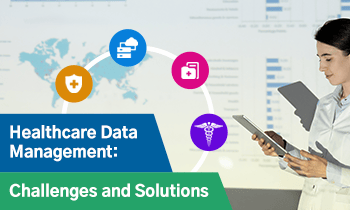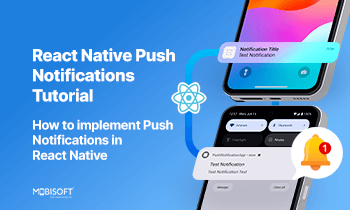In the software development lifecycle, testing is often underestimated or not given the needed amount of importance as compared to other development stages like UI/UX design. But one cannot deny the fact that testing plays a vital role in helping you overcome complex technical challenges and meet user expectations.

To put it simply, understanding its significance can deliver quality-driven applications, whereas avoiding it may expose them to potential bugs, glitches, and unwanted situations. Therefore, it is imperative to explore various testing types before releasing your product into the market.
Today, we are going to have a detailed discussion on regression testing and discuss the following concepts:
- What is Software Regression Testing?
- Why is Regression Testing Important?
- What are the Key Regression Testing Challenges and Solutions to Overcome them?
- How do You Perform a Regression Test?
- What are the Best Practices to Achieve Seamless Regression Testing?
- How to Choose the Right Regression Testing Tools?
What is Software Regression Testing?
It is nothing but a type of software testing that helps your testing and quality assurance (QA) teams to execute updates, code changes, or other optimization tasks without negatively impacting your existing application’s performance. In a nutshell, the ultimate goal of this technique is to identify any regressions in an already tested environment.
For instance, let’s consider an app that enables users to add, save and remove data. Now developers want to integrate a unique feature that allows them to edit and update data. Here, testing and QA teams need to ensure that the current features and functionalities of the app work as intended while adding new ones. They also need to verify that no bugs are introduced during the process.
To give you a better idea, let’s take a look at the below areas and understand when to use a regression test for your project.
- Adding a new feature or functionality to the software
- Updating an existing feature with a new requirement
- An application demanding configuration changes
- Improving UI/UX abilities
- Experiencing performance issues along with bug fixes
- Source code optimization activities and patch fixes
- Change in the production environment
- The codebase is fixed to solve defects
To cater to these specific areas or other unexpected turbulent circumstances, it is imperative to have a brief idea about the seven major types of regression testing techniques mentioned below.
Unit Regression Testing
It is a type of testing technique that focuses on delivering a useful coding unit that adds value to the totality of your software. Considering key features, this test works on several factors, including recurring defects. It helps your testing team to remove all the resulting dependencies while performing the test.
Corrective Regression Testing
This testing is performed when no prevailing changes or issues are introduced around the product specification. It doesn’t push the testers to plan and build new test cases because they get enough room to reuse the existing ones and generate desired results seamlessly.
Selective Regression Testing
This is a regression test that analyzes the impact of the freshly added piece of code on an already existing app. It makes sure that the QA team uses a subset of the current test case in practice. Altogether, it cuts the overhead costs related to retesting alongside saving the time and effort to develop a new test case from the ground up.
Retest-all Regression Testing
This is often regarded as the most time-consuming method, which involves testing all the existing components of a particular application from scratch. It is applicable when testers are unable to test things rightly or entirely miss out on testing some aspects related to previous testing phases.
Progressive Regression Testing
When the existing test cases become obsolete, you need to create new ones. These test cases will address all the changing requirements while modifying the product specifications. Simply put, a progressive regression test helps the QA team use fresh testing scenarios when the product vision is compromised.
Partial Regression Testing
This type of regression testing is performed only when new codes are added to the existing lines of code. It ensures that potential regressions are removed to keep the application up and run the same way as it was earlier.
Complete Regression Testing
A complete regression test can be your go-to option to handle major coding issues. It is specifically used to counter complex modifications in the root code of the software. It helps testers predict and remove unexpected issues, thereby rolling out error-free digital products and services.
Why is Regression Testing Important?
The right regression test plan can cater to diverse software development requirements. It allows your testers and QA specialists to analyze potential issues that may have emerged while introducing new code into existing programs or applications.
Some of the other reasons that make it a must-have are as follows:
Evaluates the Functionality of New Code
A regression test is used to assess an application before implementing the new code, followed by retesting the same application to ensure that it functions as it should, even after adding a new piece of code.
Ensures Freshly Added Code has No impact on Existing Coding Features
Testers can use regression testing each time a program or application is updated to track the visibility of new code alongside making sure that it has no negative impact on the current features of the program.
Monitors the Adverse Effects of Implementing Software Updates
It checks for all sorts of defects or bugs after implementing updates. For example, a mobile game tester might run a regression test to evaluate whether the introduction of a new code has resulted in unexpected vulnerabilities or glitches, thereby making iterations to fix the same.
Enables Retesting
It offers additional test executions for QA assessments to ensure the credibility, viability, and utility of the modifications made to the application’s code. By retesting each case, testers can analyze how the new changes affect the program after a software update or change.
What are the Key Regression Testing Challenges and Solutions to Overcome them?
If you are planning to perform a regression test, you need to understand the challenges that it brings to the table. Irrespective of the project size, you need to invest a good amount of time and effort to achieve desired outcomes via these tests. Especially when it comes to regression testing in Agile, your QA and testing team has to deal with complex issues related to regular modifications and customizations.
For instance, let’s consider an Agile environment that rapidly adapts to changes and is committed to delivering relevant updates for an application every alternate week. The biggest challenge while removing regressions from such an environment is selecting the test cases. Because your teams will not get the needed flexibility to test every single case related to the application.
On the other hand, with every new update, it becomes more than necessary for testers to retest a few features repeatedly while considering new test scenarios. This ultimately affects the project timelines and clogs the development process. Besides, when experiencing frequent changes, the volume of manual tests is bound to go beyond acceptable levels.
Indeed, manual tests are necessary for early development stages. But as time passes by, maintaining this high test coverage becomes a much more complex and time-intensive process. And that’s where automation can help. You can easily combat all the mentioned challenges and issues by automating regression testing. It can be an ideal choice for enterprises that want to deliver top-notch products with minimal quality assurance costs.
Be it a small-scale application or a large-scale enterprise product, automating your regression test suite can help you address multiple issues and deploy anticipated updates within a set timeline and budget. It can take care of prolonged repetitive activities such as producing massive amounts of business-critical data and help you focus on exploratory testing. Now, let us have a look at its process in detail.
How do You Perform a Regression Test?
Understanding how to do regression testing is the only way to create a fail-safe product strategy. Here are the key steps that can simplify this regression testing process and help you generate profitable outcomes in the long run.
Step 1: Build Your Regression Suite
The first step is to build an effective regression test suite that consists of a series of test cases to ensure that your application is working as expected after going through systematic updates or modifications. You can easily create it with the help of existing test cases – smoke tests, manual tests, integration tests, unit tests, performance tests, etc., that are developed from day one. You can include all testing scenarios for your regression suite that have previously verified that your application is running as intended.
Step 2: Selecting Your Regression Tests
The next step is to select the test cases that demand retesting. You don’t need to test the complete suite; instead, you should focus on specific modules and identify the ones that are driven by a change in the source code. This will help your testers to categorize test cases separately as Obsolete and Reusable. While reusable test cases should be used for upcoming regression cycles, considering obsolete ones won’t be necessary.
Some of the test cases that you rely on include:
- Error-prone areas of the program that are likely to be most vulnerable to system changes.
- Test cases that verify the primary features and functions of a product.
- Complex cases like GUI event sequences.
Step 3: Define the Timeframes to Execute Test Cases
This step is all about estimating the time required to execute the set of selected test cases. You need to finalize how often you want a regression test to run. Some key factors that can help you determine the execution time include creating test data, reviewing test cases, and regression test planning (by your testing and QA team).
Step 4: Identify the Test Cases that can be Automated
After deciding the execution time, it is time to discover the test cases that can be successfully automated. Based on the results of your exploratory testing, you need to divide the test cases into two subdivisions – Manual and Automated. For instance, manual test cases can define a complex sequence of events, while automated ones can help you reuse the same scripts as and when required.
Step 5: Prioritize Test Cases
As the name suggests, this step concentrates on prioritizing the test cases as high, medium, and low. It is necessary to determine the most relevant test cases and prioritize them to manage sessions effectively. This evaluation should be backed by user engagement and the overall software performance.
Here’s an ideal way to set the priority level for your cases:
Priority 0: All sanity test cases that involve the core functionalities of your app and pre-system acceptance.
Priority 1: Key features that are not an integral part of the core functionalities.
Priority 2: Include cases that are unable to provide high value but play a vital role in avoiding technical debt at the same time.
Step 6: Executing Test Cases
The final step is to execute all the test cases one at a time and verify whether your application is working properly as it should or not. Depending on your project-specific requirements, you can either choose to automate or go for manual testing.
Now you know how to execute a regression test. But to reap the benefits, you also need to get familiar with the four most important regression testing methods. Let’s take a look at them one by one.
#1 Regression Test Selection: Focuses on selecting the test cases that require retesting.
#2 Test Case Prioritization: Gathers all possible test cases and prioritizes them accordingly.
#3 Retest All: It is dedicated to retesting the complete regression test suite.
#4 Hybrid: It is a combination of Test Case Prioritization and Regression Test Selection methods.
Out of which, the most competent method is the hybrid one. Because it gives your team the needed extension for both regression test selection and test case prioritization simultaneously, followed by the choice of which one to conduct first. This ultimately saves time and effort for your teams.

What are the Best Practices to Achieve Seamless Regression Testing?
After knowing the importance, it is time to discuss some regression testing best practices that can help you build a foolproof regression strategy and help your products and services stand out.
Follow The Latest Regression Suite
Your teams need to stay in line with the latest regression test suites to keep up with the ever-changing user expectations and technology advancements. For this, they need to thoroughly examine the non-functional/functional requirements and prioritize the test cases accordingly.
Regularly Update Your Regression Pack
A regression pack is a compilation of test cases performed when the software is updated. It can be used to integrate Ad-hoc or random tests with ease. It is necessary to stay up-to-date with this pack to remove potential bugs in real, controlled situations.
Be Attentive to Highly-trafficked Paths
Keeping an eye for highly-trafficked paths will help you incorporate key functionalities and features into your application. It is essential to understand the target audience, and the collaborations, standard highlights, and attributes they mostly like.
Run a Full Regression Suite Only When Required
It is not necessary to run a full regression suite for every build. When it comes to a minor release, you can trigger smoke tests and carry out a specific regression test for a modified module. Besides, organizing test cases as per the Automated Ultrasonic Testing (AUT) can also prove beneficial.
Repeat Test Cases
Tests that identified errors and glitches in the past are worth incorporating into your regression packs. Executing the tests that the program passes easily can also ensure authenticity.
Be Data-driven
Develop the habit of relying on datasets in order to increase the efficiency of your regression testing environment. This will help you avoid redundancies, create scripts with lesser code, store information as a database that can be managed easily, and so on.
Closely Observe Changes
Change is the only constant in software development. Hence, you must pay close attention to every significant change or modification. Make sure you collaborate with your developers, testers, and QA professionals to gain hands-on knowledge about the latest upgraded version and be aware of new alterations.
Use a Diversified Automation Toolkit
You need to use relevant tools and technologies that will increase test coverage, offer wide-ranging testing opportunities, and help you explore your preferred scripted language to its best.
How to Choose the Right Regression Testing Tools?
There are various tools available across the market, including TestComplete, IBM Rational Functional Tester, Selenium, Appium, REST Assured, MicroFocus UFT, etc., that you can use to successfully achieve regression testing automation or satisfy multiple manual testing requirements.
To find out the right fit for your project, you can follow the below checklist.
Test Authoring
The tool should allow quick test creation and editing to support the increasing number of regression test cases with new feature additions or an entirely new version release.
Automated Regression Tests
The tool you select must have the potential to schedule and perform automatic regression testing after every build.
Detailed Reports
It is important to know the status of the release to decide the most appropriate time for launching the product. Hence, you need to choose a tool that determines release readiness by providing in-depth reports and statistics.
Actionable Feedback
Your chosen tool should provide quick, actionable feedback to clearly evaluate active tasks, proceeding items, and potential failures.
Parallel Execution
The tool should be able to host an environment that supports parallel testing and takes minimal time to execute the same.
Affected Test Identification
You need to choose a tool that identifies affected tests quickly and easily because of a change. This will save a lot of debugging and maintenance time that your testing and QA team may spend on determining the affected tests after each modification.
Easy to Maintain
It takes a decent amount of time for a tester to plan and execute maintenance activities for an application. Thus, you need to choose a tool that is easy to understand, use, and maintain. It should support quick pivoting and iteration without slack.
Collaboration
The tool should facilitate cross-functional team collaboration and communication throughout the testing process. It should assist teams in creating a modern software development environment that is based on transparency and agility.
Wrapping Up
Whether you have a legacy application in place or a new product all set to launch, a well-structured regression testing plan will help you fulfill your desired QA and software development goals by all means. It will prevent your project from going over budget, keep your teams on track, and eliminate unexpected bugs from impacting the overall productivity of your application. You just need to follow the right process and choose tools that can help you implement and use it to your benefit. You can also opt for our test automation services to build world-class, error-free software solutions.

Author's Bio:

Pritam Barhate, with an experience of 14+ years in technology, heads Technology Innovation at Mobisoft Infotech. He has a rich experience in design and development. He has been a consultant for a variety of industries and startups. At Mobisoft Infotech, he primarily focuses on technology resources and develops the most advanced solutions.


